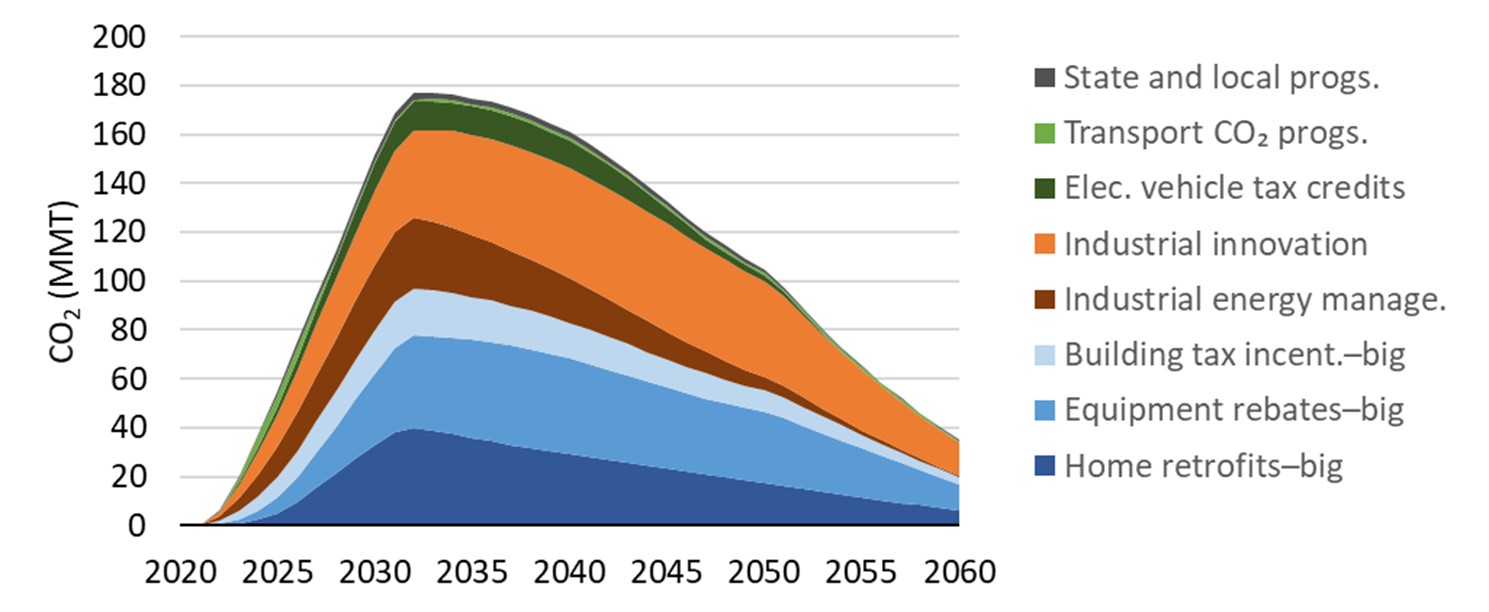As Congress scrambles to develop a bill to invest trillions of dollars in economic recovery, it seeks to create jobs, slash climate-warming emissions, and help people struggling to pay their bills. Transformative energy efficiency investments would deliver major progress on all three.
In a new analysis, we look at almost $350 billion of investments to save energy in every sector of the economy, largely proposals currently before Congress as it develops a “reconciliation” bill. We find that these investments could achieve over the lifetime of the investments and savings:
- 3.2 million added jobs (job years)
- 4.5 billion tons of reduced carbon dioxide (CO2) emissions, equivalent to total U.S. emissions for 11 months
- $282 billion in energy bill savings and other consumer benefits (e.g., manufacturing cost, health, and comfort benefits) above the investment
The new analysis does not include savings from expanding utility efficiency programs. However, in a recent fact sheet we present an analysis that found that spurring utilities through a combination of payments and fees to expand assistance for households and businesses to undertake energy-saving measures could cut another 2.4 billion tons of emissions, with a federal cost of just $4-10 billion.
$350 billion is a big investment, far more than what the government spends now on efficiency, but over 10 years, it’s less than private spending on efficiency (and less than what supporters are seeking in the bill for renewable energy). We also found that a smaller $126 billion package could achieve more than half the impacts.
How do we reap these benefits? These results combine our analyses of 21 potential investments across eight areas, as shown in the figure below.
These analyses are revised (some significantly) from a fact sheet we published in June, as proposals have been refined and new ideas brought forward.
Here are a few of the key possibilities pending before Congress; a couple other items are in the bipartisan infrastructure bill that also is pending.
Industrial decarbonization: The greatest carbon savings per federal dollar, by far, would be for measures to reduce emissions and reduce costs in manufacturing plants, yet these proposals have received relatively little attention to date. For example, the First Three proposal would provide federal cost-sharing for the first three full-scale applications of new transformative industrial technologies that promise massive reductions in emissions, such as direct reduction of iron with “green” hydrogen. These incentives would be especially effective in pushing a transition to a clean industrial sector, with estimated savings of one billion tons of CO2. Rep. Kathy Castor (D-FL) recently introduced a bill to authorize such a program.
Home retrofits and electrification: A second key area is energy efficiency retrofits of homes—especially for low- and moderate-income households that rent apartments and that live in single-family houses—and installation of efficient heat pumps and heat pump water heaters. Although these measures have relatively modest carbon and energy savings per dollar invested, their equity and affordability benefits are large. They are essential to improve health and reduce costs for many people who are struggling to pay bills or living in poor conditions. And they are essential to help spur the market toward retrofits needed to reduce emissions from the more than 100 million existing homes that will still be around in 2050.
An example is the GREAHT proposal to fund efficiency and heat pump upgrades, as well as solar panels, health and safety improvements, and resilience measures in buildings with nearly 9 million subsidized and naturally occurring affordable apartment units. GREAHT would cut 200 tons of CO2 emissions while providing $24 billion in energy savings and more in other benefits.
Electric trucks and buses: Our recent post makes clear that we need new investments in our transportation system that serve both travelers and the climate. One key step is a tax credit for the purchase of new electric trucks and other commercial vehicles, which are far behind electric cars in development and availability. A 30% tax credit, as proposed in the Senate Finance Committee’s Clean Energy for America Act and Rep. Don Beyer’s (D-VA) Green VAN Act, would help shift the freight sector to non-polluting vehicles. It could result in half a million more electric trucks and save 12 billion gallons of diesel fuel.
Utility efficiency programs: A key Biden administration goal for the reconciliation bill is to use a combination of tax credits, payments, and fees to push the electric sector to 80% clean sources by 2030. To make that transition reliable, cost-effective, and equitable, we believe reducing and managing demand are as important as developing new sources. To that end, in addition to the investments described in this white paper, we’ve called for the bill to include provisions to spur utilities to meet a growing portion of energy needs through efficiency programs that help their customers save energy and costs. Boosting utilities’ efficiency work will make it easier to meet remaining energy needs with clean power, help incorporate more electric equipment and more variable renewable power, and reduce costs for electric customers.
With these energy efficiency investments, we can take a big step forward on the way to an economy that benefits all consumers, workers, and our climate.


